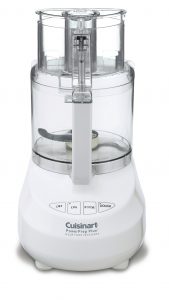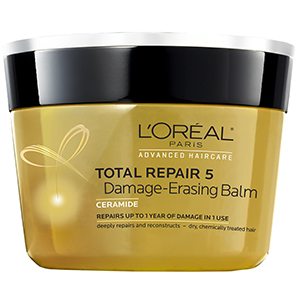8M Cuisinart Food Processors Recalled, 1996-2015 models
December 13th, 2016. By LucyC

(Image: CPSC.gov)
Wouldn’t want to be in shipping and receiving for this recall. Cuisinart is recalling “about 8 million” food processors, and a further 300,000 in Canada, because it can slice and dice your tongue and teeth in addition to the fruit and veg.
It seems that the food processor’s riveted blade can crack over time and small, metal pieces of the blade can break off into the processed food. As the Consumer Protection Safety Agency so eloquently puts it, “This poses a laceration hazard to consumers.”
Not a great deal more you need to add to that, really. After all, there’s not much grey area in chewing blades and cutting you mouth. As some 30 people who have reported cutting their mouths and injuring their teeth can no doubt attest to. Imagine asking your guests, “How’s the Hummus?” Yeah, ok—let’s not go there.
Apparently, Conair has received 69 reports of consumers finding broken pieces of the blade in processed food, including those 30 reports of mouth lacerations or tooth injuries. And of course, those terrible horror movies from the seventies come to mind, for those of you old enough to remember. Think Texas Chain Saw Massacre and its ilk, for example. It’s the foodie version… (Although chasing someone around the house with a food processor doesn’t quite have the same impact as a chain saw. I digress.)
In case you’re wondering, as most people would, if you own one of these defective food processors, the relevant information is thus:
“This recall involves the riveted blades in Cuisinart food processors with model numbers that begin with the following: CFP-9, CFP-11, DFP-7, DFP-11, DFP-14, DLC-5, DLC-7, DLC-8, DLC-10, DLC-XP, DLC-2007, DLC-2009, DLC-2011, DLC-2014, DLC-3011, DLC-3014, EV-7, EV-10, EV-11, EV-14, KFP-7 and MP-14. The model number is located on the bottom of the food processor. The blades have four rivets and are silver-colored stainless steel and have a beige plastic center hub. Only food processors with four rivets in the blades are included in this recall. Cuisinart is printed on the front and on the bottom of the food processors.” (CPSC.gov/recalls)
You can contact Cuisinart toll-free at 877-339-2534 from 7 a.m. to 11 p.m. ET Monday through Friday and from 9 a.m. to 5 p.m. ET Saturday and Sunday or online at www.cuisinart.com and click on Product Recalls at the bottom of the page for more information. Apparently, Cuisinart is offering replacement blades. Think I would give that some serious consideration.
The food processors were sold at department, gourmet and specialty stores nationwide and on various websites from July 1996 through December 2015 for between $100 and $350. They were distributed by Conair Corp., of Stamford, CT, owner of the Cuisinart brand, and made in China.
Think I’ll ask Santa for a good set of kitchen knives.
A Hairy Business! It’s L’Oreal’s turn to face a Haircare Lawsuit
December 7th, 2016. By LucyC

Image: L’OrealParisUSA.com
When is not being completely honest about a product’ benefits considered consumer fraud? Or more precisely, lawsuit worthy? L’Oréal might be about to find out. They got hit with a consumer fraud class action lawsuit recently, over allegations its Total Repair 5 Damage-Erasing Balm doesn’t do what it’s supposed to do. Ah expectations. They are so dangerous. Remember what the folks who bought Wen Cleansing Conditioner were expecting?
Given the name, Total Repair 5 Damage Erasing Balm, I’m not sure what, had I purchased the product, I should expect. The words “repair”, “erasing” and ‘balm” all appear in the name. So, does this product repair, remove or soothe your hair? Well, hopefully not remove (again, flashback: Wen…).
Surprisingly, according to Manhattan resident Vivian Lee, Total Repair 5 Damage Erasing Balm doesn’t do anything. Say whaa…? Would never have guessed. And, perhaps that’s a good thing, given that L’Oreal can’t seem to decide on exactly what it is supposed to do—if the name is any indication.
According to Lee, she bought a jar of this stuff at Walgreens and paid over $9 for the privilege or doing so. (Note, an 8.5 oz. jar of the stuff is available elsewhere online for $5-$7…) And apparently she says, “the only reason a consumer would purchase the Total Repair 5 Damage Erasing Balm is to obtain the advertised hair repair benefits.” Makes sense…
But—Lee claims that the product didn’t even come closer to approaching a “total repair” (whatever that means) of her hair. She claims L’Oréal “consistently conveyed the very specific message to consumers that the product will “repair up to one year of damage in one use,’” but “there are no ingredients in the Total Repair 5 Damage Erasing Balm that could actually repair a year’s worth of hair damage ‘instantly,’ particularly after one use.” Nothing works instantly after one use, except Twitter. Come on now!
I’d be interested to know what one year’s worth of hair damage look like? Baldness? Thinning, patchy hair? Bright orange hair with white roots? What? My idea of damage and yours could be very different. L’Oreal does however, try to cover its bases, by stating that its product would allegedly fix split ends, weakness, roughness, dullness and dehydration in hair.
But the science has it, in the end. According to Lee’s complaint, hair is made of keratin proteins, yes—we knew that. But, sadly, there are no keratin proteins in L’Oreals’ Total Repair 5 Damage Erasing Balm, so said product can’t do what it says. The product’s main conditioning ingredients, according to Lee, are behentrimonium chloride, amodimethicone and hydroxypropyl guar. And she says these ingredients are common in other products that do not claim to repair hair instantly.
Lee is looking to establish a nationwide class and a New York subclass. Her claims include violations of the New York general business law, negligent misrepresentation, breach of express warranty and unjust enrichment.
FYI—The case is Lee et al. v. L’Oréal USA Inc., case number 1:16-cv-09266, in the U.S. District Court for the Southern District of New York.
Gotta go—having my hair done… 😉
Matrix ClimbMill Malfunction Prompts Recall
November 30th, 2016. By LucyC
A recall of an indoor hill climbing machine called Matrix ClimbMill has been issued, prompted by reports of injuries suffered by people using the device. Ok, so the first thing that comes to mind is why not just go outside? You can suffer the same injuries for a fraction of the cost and inconvenience in the great outdoors—or even the nearest shopping mall. And hey—fall in the shopping mall—you might even be able to sue. No, really.
These Matrix ClimbMill machines are a good deal more expensive that a gym membership or new pair of hiking boots, or possibly filing a lawsuit. Sold by Johnson Health Tech North America and its commercial fitness equipment dealers nationwide, the Matrix ClimbMill retailed for—are you sitting down—between $8,000 and $13,000. I may be wrong, but I think you could actually get primo accommodations in Tahiti for that kind of dough, Joe. The obvious question then becomes, why wouldn’t you? Take that trip to Tahiti, I mean.

Image: CPSC.gov, Johnson Health Tech ClimbMills serial number location
Oh, but you wanted to get in shape. Without leaving home. So ClimbMill was a seemingly good, though pricey, option…until…
Apparently, the defect lies in the stop/pause controls on the right hand grip. They can malfunction, posing a fall hazard to the user. Yes, stopping is always a problem—not just for hill climbers. In fact not being able to stop could be the reason a person starts using these machines. Can’t stop eating, drinking, sitting on the sofa watching TV… you know. May as well start exercising.
There’s certainly a fair number of folks out there who bought a Matrix ClimbMill stair-step exercise machine—some 10,500 of them were sold from December 2011 through September 2015. Not sure what happened after September 2015. Might be worth finding out.
In any event, the company has received 19 reports of incidents involving the stop/pause hand grip malfunctioning, including eight reports of injuries such as scrapes, bumps and a shoulder dislocation. Ouch! That’s enough to send you back to the fridge.
According to the recall, only ClimbMills that have a right hand grip with the words “STOP” and “Pause” printed on them are included in this recall. The frame serial numbers are located on the bottom front of the base near the power switch. The ClimbMills are black and gray with Matrix printed on the side of the machine. These four-step exercise machines are used in commercial fitness facilities such as health clubs, hotels, apartment complexes, rehabilitation centers, schools, and municipal facilities.
Just in case you own a Matrix ClimbMill stair-step exercise machine, the following frame serial numbers are included in the recall:
Serial Numbers
CS17111100102 – CS17120901766
CS21130800080 – CS21130500062
CS22130602881 – CS22130602863
CS23130800001 – CS23140703749
CS23B131100001 – CS23B140701050
CS24140700001 – CS24150702803
CS24C140800001 – CS24C150200900
CS24H150100001 – CS24H150500049
Now, for the sake of clarity, the Consumer Product Safety Commission is warning all consumer who own a recalled ClimbMill to stop using them immediately and contact Johnson Health Tech North America to schedule a free repair. Johnson is contacting purchasers of the recalled ClimbMills directly.
I still say going on a trip would be better. Heck—just hauling your luggage round the airport could be enough of workout.
The WATCH list: Top 10 Worst Toys for Child Danger
November 25th, 2016. By LucyC
 Well folks, it’s that time of year again. I’m referring to toy shopping. After all, some of the hottest deals for holiday shopping start approximately 2.8 seconds after the turkey’s been devoured. And if it’s you who’s tasked with finding that perfect, most desirable toy this year, there are a few things you might want to be aware of before heading out the door (or to your keyboard).
Well folks, it’s that time of year again. I’m referring to toy shopping. After all, some of the hottest deals for holiday shopping start approximately 2.8 seconds after the turkey’s been devoured. And if it’s you who’s tasked with finding that perfect, most desirable toy this year, there are a few things you might want to be aware of before heading out the door (or to your keyboard).
The consumer watchdog group, appropriately called “The World Against Toys Causing Harm Inc., (WATCH) – has compiled a list of the world’s most dangerous toys that, obviously, parents would be wise not to buy.
As their name indicates, the WATCHdogs aren’t fooling around. They note that more than 800,000 toys have recalled since January 2015, with more than 500,000 of those toys having being pulled from the market just this year. There’s been a 40 percent increase in toy-related injuries from 1990-2011. AND, are you sitting down—WATCH also notes that one child is treated in the US emergency rooms every three minutes for a toy-related injury. More than 60 children were killed in toy related incidents between 2010 and 2014.
Ok—so now I have your attention, and just in time for Black Friday, WATCH has issued a list of their nominees for top 10 toys to be avoided (the names are a bit of a giveaway). Choking hazards seem to feature prominently, as do other serious injuries.
Specifically, Peppa Pig’s Muddy Puddles Family, and the Baby Magic Feed and Play Baby can both, allegedly, provide risk for choking, but neither carries the appropriate warnings. So, if these toys had a warning for choking, would that make it ok to sell them? Just asking.
Then there’s the Kids Time Baby Children’s Elephant Pillow, which also apparently does not have a warning for the risk of suffocation. Again, if it carries a warning, does that make it ok?
The Slimeball Slinger, which, according to WATCH, is a slingshot type of thing that can be fired from over 30 feet. Great. Not surprisingly, it poses a risk of eye injury, never mind family pets, windows and china cabinets.
The Banzai Bump n’ Bounce Body Bumpers allegedly have the potential to cause impact injuries and do not come with protective helmet, knee guards or other protective equipment. Maybe those items are sold separately?
The Nerf Rival Apollo XV-700 Blaster, allegedly has the potential to cause eye injuries.
The Good Dinosaur Galloping Butch was included because it failed to warn that the pointy, rigid tail of the dinosaur can puncture children’s skin.
Peppy Pups, which could cause strangulation in young children due to a pull string measuring 31 inches. Yikes.
The Flying Heroes Superman Launcher also poses a hazard from eye injury from the items launched from the toy.
And finally, The Warcraft Doomhammer made the list allegedly due to its heavy, rigid hammer than can inflict bodily harm if children use the toy as a weapon, (what else is this meant to be used for, given the name?). Apparently the Doomhammer is similar to seen in the video game or in the movie. Is World of Warcraft PG rated? Seriously?
If you’re interested in learning more about these and other potentially dangerous toys, you can view the list at http://toysafety.org/
That about covers if for now. Happy shopping.
Wait, Krispy Kreme Doughnuts aren’t All Natural?
November 15th, 2016. By LucyC
 I have to be honest, the last thing I needed to read about this week was a lawsuit that attacks an institution—a food that has earned the right to be considered junk, in part because it makes no bones about it and in part because anything that tastes that good just has to be bad for you.
I have to be honest, the last thing I needed to read about this week was a lawsuit that attacks an institution—a food that has earned the right to be considered junk, in part because it makes no bones about it and in part because anything that tastes that good just has to be bad for you.
But heck, everything is fair game these days, it seems. And somebody has managed to drum up a 32-page, 32 pages—seriously?, Krispy Kreme lawsuit against the doughnuts over claims the doughnut chain is telling porky pies (lies) over the ingredients of its fruit-filled and maple-glazed donuts.
The allegations are that Krispy Kreme conducts “false and misleading business practices” because its “Chocolate Iced Raspberry Filled,” “Glazed Raspberry Filled,” “Maple Bar,” and “Glazed Blueberry Cake” doughnuts and doughnut holes do not actually contain real raspberries, maple, or blueberries. Oh dear. They might be able to call consumer fraud on this one, but not defective products, no siree—a box of Krispy Kremes could never be defective in my mind.
Plaintiff Jason Saidian, who for the record, lives in Los Angeles, is claiming the doughnuts are in fact made with nutritionally inferior ingredients.” WTF does that mean? Guess you have to read the whole 32 pages to find out.
Saidian’s story goes he bought the nutritionally inferior raspberry, maple, and blueberry doughnuts at issue from a Krispy Kreme location in Santa Monica. He claims he bought the doughnuts because he believed the company’s representations about the “premium ingredients” in its donuts.
For a little drama, the lawsuit apparently goes on to explain that the doughnuts are displayed in a tray behind a glass counter, along with a small placard in front of each tray that provides the name of the doughnut variety. But, I’m guessing, no laundry list of ingredients.
According to Saidian, the doughnuts appear as if they contain the “premium ingredients” but Krispy Kreme reportedly does not provide customers with access to information on what the actual ingredients are in the doughnuts. Ok seriously—who’s got time to read all that stuff—if you’re in there buying a doughnut I’m guessing you passed on the Kale smoothie for a reason.
Here’s all you need to know about the ingredients in doughnuts. They are, essentially, dough, fat, sugar, sugar, sugar, dough, fat, sugar and maybe some fruit preserves—with sugar in it—thrown in for good measure. Where’s the grey area? They can rot your teeth, expand your waistline, cause heart disease— if eaten liberally—just put that caveat in there—and for one brief moment, as all those questionably wonderful ingredients melt in your mouth in a kaleidoscopic orgasm of pure bliss—make you forget everything that’s wrong with the world. So you know what, just leave the doughnut alone, please.
But no. Not this guy. “Even when consuming the Products, Plaintiff and other consumers cannot easily decipher whether the filling or glazing they are consuming contain actual raspberries, blueberries, or maple ingredients, because the Defendant has formulated and manufactured the Products in a manner that masks the absence of such ingredients,” the class action states. So where’s the problem? Why worry about it?
It appears the rub is that Krispy Kreme is capable of making doughnuts with “real” ingredients in them—just for the sake of clarity—this is explained in the lawsuit as … the “Glazed Lemon Filled” doughnuts contain lemon juice, the “Cinnamon Apple Filled” doughnuts contain both apple and cinnamon and the “Glazed Strawberry” doughnuts contain strawberries.
Therefore, Saidain alleges, one can deduce that Krispy Kreme is not only capable of making the doughnuts at issue with real ingredients but, one would guess, should have, as people believe that’s what they’re getting. Therefore, Krispy Kreme should also have been aware that its products are falsely advertised and would be deceiving to an unsuspecting customer.
According to the lawsuit, Krispy Kreme allegedly (hopefully) uses sugar, corn syrup, gums and artificial food coloring to “mimic the texture, shape and color” of these “premium Ingredients” instead of naturally occurring products with proven health benefits.
Ok—hold on one fat saturated minute here—in no universe either known or as yet undiscovered are doughnuts considered to have any proven health benefits beyond the placebo effect. Somebody please give this guy some Kool-aid. Or a coffee…and a maple glazed doughnut.
Archive by Category
- Accidents (24)
- Airlines (9)
- Asbestos Mesothelioma (262)
- Automotive (25)
- Celebrity (14)
- Class Action (84)
- Complaints/Comments (15)
- Consumer Fraud (84)
- Contest (2)
- Court of Public Opinion (5)
- Crazy Sh*t Lawyers See (61)
- Criminal Law (4)
- Defective Products (111)
- DePuy ASR Hip Recall (2)
- Discrimination (22)
- Drugs/Medical (248)
- Elder Care Abuse (4)
- Emerging Issues (462)
- Employment (54)
- Environment (52)
- Financial (28)
- Food Illness (15)
- Human/Civil Rights (4)
- Insecurities (5)
- Insurance (16)
- Intellectual Property (16)
- Internet/E-commerce (19)
- lawsuits (161)
- Lawyers (20)
- Lawyers Giving Back (43)
- Lex Levity (10)
- Personal Injury (106)
- Pleading Ignorance (53)
- Real Estate (2)
- Recall (6)
- Scam (3)
- Securities (13)
- Settlement (81)
- Tort Reform (2)
- Totally Tortelicious (81)
- Veterans (11)
- Whistleblower (9)